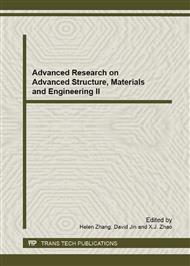p.183
p.187
p.191
p.195
p.199
p.204
p.208
p.213
p.217
Preparation of Styrene-Acrylate Emulsion (SAE) Latex by Recycling Waste Expandable Polystyrene Foam
Abstract:
This study explored recycling waste expandable polystyrene (EPS) foam to produce styrene-acrylate emulsion (SAE) latex. EPS substituted styrene ranging from 10% to 50%. Flocculation was observed when EPS content is >40%. Solid content and gel rate confirmed this observation. Particle size distribution showed particle size increased and its distribution broadened as EPS content increased. This may probably due to the viscosity increment of the emulsion droplets when EPS content increase and lead to increment of the droplets size and the emulsion gradually lost stability, therefore the solid content and gel rate increased. Hence stable SAE can be produced with EPS <30%. Monomer conversion results showed EPS did not affect the final monomer conversion percentage. IR results showed that incorporation of EPS did not alter the chemical composition of the SAE product. The presence of EPS lowered the monomer conversion rate and but did not save the polymerization time.
Info:
Periodical:
Pages:
199-203
Citation:
Online since:
May 2013
Authors:
Price:
Сopyright:
© 2013 Trans Tech Publications Ltd. All Rights Reserved
Share:
Citation:


